Becoming a homeowner is a significant step that can seem daunting if you do not know where to start. As a first-time buyer, you’re stepping into a world of decisions, from choosing the right neighborhood to navigating the financial process. With the right knowledge and guidance, the path to your first home can be smooth, rewarding, and filled with confidence. This guide walks you through every essential step, empowering you to turn the dream of owning a home into reality.

Understanding Your Budget and Financial Readiness
Prior to commencing your search for a home, it is imperative to have a clear understanding of your budget. Begin by assessing your financial situation, including income, savings, and monthly expenses. This will help you determine how much you can afford to spend on a home. A general rule is that your monthly mortgage payment, including taxes and insurance, should not exceed 28% to 30% of your gross monthly income. To avoid financial strain, consider additional costs like maintenance, utilities, and possible homeowners association (HOA) fees.
A critical aspect of readiness is your credit score. This three-digit number greatly influences your ability to secure a loan and the interest rate you’ll receive. If your credit score needs improvement, focus on reducing debts, making timely payments, and avoiding new credit inquiries. Additionally, review your credit report for errors that may impact your score and have them corrected promptly.
Saving for a down payment is another important step. While some loans allow as little as 3% down, putting down 20% can eliminate private mortgage insurance (PMI) and lower your monthly costs. Create a savings plan and explore assistance programs for first-time buyers.
Lastly, getting pre-approved for a mortgage will clarify your price range and demonstrate to sellers that you’re a serious buyer. A pre-approval letter provides a clear starting point for your search, ensuring your focus remains on homes within your financial reach.
Researching Neighborhoods and Market Trends
Finding the right location is key to ensuring long-term satisfaction with your home. Begin by evaluating your lifestyle and identifying priorities. Consider factors such as proximity to work, schools, public transportation, and local amenities like parks, restaurants, and grocery stores. Some buyers may prioritize walkability, while others might focus on quieter suburban areas. Taking these preferences into account will help narrow your options.
Once you’ve identified a few neighborhoods of interest, take the time to explore them in person. Visit at different times of the day to observe traffic patterns, noise levels, and overall ambiance. Research crime statistics and school ratings, even if you don’t have children, as strong schools can enhance property values. Online tools like city or county planning websites can provide insights into future developments that may impact the area’s appeal.
Studying market trends is equally important. Research home prices in your chosen neighborhoods and how they’ve changed over time. This helps you understand whether the area is appreciating in value, which could affect your long-term investment. Knowing the average time homes stay on the market can also guide your strategy. In a seller’s market, where homes sell quickly, you may need to act fast and make competitive offers. Conversely, a buyer’s market offers more room for negotiation.
Engage with local real estate professionals who have expertise in the area. Their insights on market conditions and pricing trends will prove invaluable. With the right research and preparation, you can confidently choose a location that matches your needs and offers potential for future growth.
Making a Wish List of Must-Haves
A well-thought-out wish list can make your home search more efficient and enjoyable. Start by distinguishing between needs and wants. Needs are the non-negotiable features required for daily living, such as the number of bedrooms, bathrooms, or proximity to work or schools. Wants are features you’d like to have but can live without, such as a pool, hardwood floors, or a gourmet kitchen.
Think about your lifestyle and how your home will support it. If you work remotely, a dedicated office space might be a priority. If you entertain frequently, an open floor plan or spacious dining area could be important. Families with children may focus on large yards or proximity to parks. Consider not only your current needs but also how they might evolve in the next five to ten years. Planning ahead keeps your home functional as life evolves.
While aesthetics can be tempting, focus on the structural and functional aspects of a home. For instance, prioritize square footage, layout, and lot size over cosmetic details that can be changed later. Upgrades like fresh paint or new flooring are relatively easy to make after moving in, but features like location and layout are harder to adjust.
Once your wish list is complete, share it with your real estate agent. This ensures they understand your preferences and can match you with homes that meet your criteria. Staying clear on what matters most to you keeps your search focused and productive, saving time and effort.
Navigating the Home Search Process
The home search process is one of the most exciting parts of buying a house, but it can also be overwhelming without a clear plan. Start by working with a qualified real estate agent who understands your needs and has access to comprehensive listings. They’ll help you identify properties that match your budget, location, and wish list.
Be prepared to visit several homes and keep an open mind. Pictures and online descriptions often don’t capture a property’s full potential. As you tour homes, pay close attention to both the positive aspects and potential concerns. Examine the home’s structure, plumbing, and electrical systems. Note the age and condition of major components like the roof, windows, and HVAC system, as these can impact your maintenance costs.
A home inspection is a vital step in the process, providing a detailed assessment of the property’s condition. While some issues can be negotiated with the seller for repairs or credits, others might be deal-breakers. Stay organized by taking notes and photos during each showing. This will help you compare properties and remember key details as you narrow your choices.
Keep track of the market dynamics as you search. Homes in high-demand areas may receive multiple offers quickly, requiring prompt decision-making. Conversely, properties that have been on the market for a while might offer opportunities for negotiation. Staying informed and flexible ensures a productive search that aligns with your goals.
Making an Offer and Negotiating Terms
Once you’ve found the perfect home, it’s time to make an offer. This step requires strategy and understanding of the local market. Your agent will set a competitive offer based on similar sales, the home’s condition, and its time on the market.
Your offer should include key terms such as the purchase price, proposed closing date, and any contingencies. Common contingencies include a satisfactory home inspection, final mortgage approval, and an appraisal that meets or exceeds the sale price. These protect your interests and allow you to renegotiate if issues arise.
After you submit your offer, the seller may counter with different terms. Negotiations can involve adjustments to the price, contingencies, or repair requests. Stay firm on your priorities, but be willing to compromise where it makes sense. A skilled real estate agent can guide you through this process, ensuring you achieve a fair deal.
Once your offer is accepted, you’ll enter the escrow period. During this time, finalize your loan application, schedule inspections, and work through the required paperwork. Being organized and responsive helps keep the transaction on track. By the end of this phase, you’ll be one step closer to holding the keys to your new home.
Closing the Deal and Moving In
Closing is the final milestone before becoming a homeowner. During this phase, you’ll complete all necessary paperwork, transfer funds, and take ownership of the property. Closing costs, which typically range from 2% to 5% of the purchase price, cover expenses such as lender fees, title insurance, and escrow charges. Review these costs with your lender in advance to avoid surprises.
The final walkthrough occurs shortly before closing. This is your opportunity to confirm the home’s condition matches your expectations and that any agreed-upon repairs have been completed. Address any concerns promptly to avoid delays.
On closing day, you’ll sign the required documents, including the mortgage agreement and property deed. Once everything is finalized, the title will officially transfer to you. With the paperwork complete, you’ll receive the keys to your new home, marking the beginning of this exciting chapter.
After closing, focus on organizing your move. Create a detailed checklist that includes transferring utilities, scheduling movers, and updating your address. Preparing in advance ensures a smoother transition, allowing you to settle into your new space with ease. Congratulations on achieving the goal of homeownership!
Ready to Make Your Move?
As a first-time home buyer, you’re taking an exciting step toward a future filled with possibilities. With the right preparation and guidance, the process can be both rewarding and seamless. When you’re ready to begin your journey, reach out to discuss your needs and explore your options. Let’s work together to find the perfect home for you.



